Preparing for a job interview is key to making a great impression and landing your dream role. But knowing exactly what to do before, during, and after an interview can be tricky. This is where having a useful interview template can set you up for success. An interview template acts as a guide to walk you through the entire interview process step-by-step.
It allows you to strategize about how you’ll introduce yourself, what questions you’ll ask the interviewer, and how you’ll conclude the meeting. With an interview template, you can also plan out examples that showcase your qualifications for the role. Having talking points mapped out will help you articulate your fit for the position confidently and clearly. Whether you’re a first-time job seeker or industry veteran, utilizing an interview template helps reduce stress and prevents you from missing key opportunities to stand out. In this article, we will explore the benefits of using a free interview template as you get ready for your next big interview.
Table of Contents
Interview Templates
Preparing for a job interview is key for making a strong impression. An interview template provides a framework to organize critical talking points.
The template covers frequently asked questions about your work history, skills, goals, etc. It provides space to script responses reflecting your qualifications. Practicing answers using the template will instill confidence. You can tailor responses based on the specific role and company.
An interview template ensures you convey key messages. It prevents anxiety-induced rambling or blanking under pressure. Practicing questions in a mock format makes real interviews feel like a natural conversation. The template transforms preparation into relatable stories that showcase your fit. By organizing thoughts ahead of time, you can focus on active listening and engagement. Thoughtful preparation with an interview template leads to interview success.
What Is An Interview Guide Template?

An interview guide template is a pre-made framework used to prepare for a job interview. It helps you effectively plan out and organize all aspects of your interview to optimize your performance.
The interview guide provides detailed suggestions and reminders to help you succeed before, during, and after the interview:
Before the Interview
- Research the company, role, interviewers to prepare informed questions
- Review your resume and qualifications to cement your personal narrative
- Anticipate likely interview questions and formulate illustrative answers
- Prepare stories and examples that highlight your skills and achievements
- Plan your interview attire to match company culture while looking polished
During the Interview
- Outline strategies to make a strong first impression when arriving
- List questions to ask the interviewer that demonstrate your interest
- Highlight factors to emphasize about your background and experience
- Outline responses to common questions like your strengths, weaknesses, salary requirements
- Compile a list of examples, anecdotes, data to back up your responses
After the Interview
- Note any key points you want to remember, follow-up, or send thank you notes on
- Assess your performance to continue improving for future interviews
Benefits Of Using An Interview Questions
Using structured interview questions offers a variety of advantages in the hiring process. Here are some of the detailed benefits:
Standardization
By asking the same set of questions to every candidate, interviewers can ensure that they are evaluating each individual on a consistent set of criteria. This standardization helps reduce biases and ensures that the selection process is fair.
Comparability
When every candidate is asked the same questions, it becomes much easier to compare their answers side by side. This makes the decision-making process more straightforward.
Objective Evaluation
Structured questions allow for a more objective evaluation. Interviewers can rate or score answers based on pre-defined criteria, minimizing the influence of subjective opinions or biases.
Reduced Bias
The use of a structured set of questions helps to limit the effects of cognitive biases, such as confirmation bias or affinity bias, which can unfairly influence the assessment of a candidate.
Legally Defensible
Using a consistent set of interview questions can help organizations defend their hiring decisions in case of legal disputes. It provides a structured framework that shows candidates were evaluated based on job-related criteria.
Comprehensive Assessment
With a well-structured set of questions, interviewers can ensure they cover all essential topics, skills, and qualifications relevant to the position. This ensures that crucial areas are not inadvertently overlooked.
Efficiency
Structured questions can streamline the interview process. Interviewers don’t have to think on the fly about which questions to ask next, leading to smoother and more efficient interviews.
Professionalism
Using a set list of questions reflects a level of preparation and professionalism on the part of the hiring organization. This can create a positive impression on the candidates and elevate the organization’s brand in the eyes of potential employees.
Feedback and Improvement
Over time, as multiple interviews are conducted, the organization can collect feedback on which questions are most effective in predicting job performance. This iterative feedback loop can help in refining the interview process for better results in future hires.
Training and Onboarding
Structured questions and the responses they elicit can also assist in identifying areas where a new hire might need additional training or support, aiding in more targeted and efficient onboarding processes.
Consistency across Multiple Interviewers
In organizations where multiple interviewers may be involved in the hiring process, having a set list of questions ensures that there’s consistency in the evaluation process, regardless of who conducts the interview.
Clear Expectations
By asking standardized questions about job responsibilities, culture fit, and other criteria, both the interviewer and interviewee gain a clearer understanding of job expectations and the kind of candidate the organization is seeking.
Types of Interview Formats
Interviews can take on a variety of formats, each with its own distinct advantages, depending on the goals and requirements of the hiring organization. Here’s a detailed breakdown of the different formats you’ve mentioned:
- Multiple Round Interviews:
- Description: This approach involves interviewing candidates across several stages or rounds, with each focusing on different aspects or levels of scrutiny.
- Purpose: The aim is to whittle down candidates at each successive stage, ensuring a thorough assessment before making the final hiring decision.
- Advantages: This allows different stakeholders (like HR, department managers, team members, and senior leadership) to weigh in on the hiring decision, and ensures candidates are evaluated on diverse criteria—from cultural fit to specific skill sets.
- Individual Interviews:
- Description: Here, a candidate meets one-on-one with an interviewer. This format is the most traditional and can be part of the multiple-round interview process.
- Purpose: It’s designed to get an in-depth understanding of a candidate’s qualifications, experiences, and fit for a position.
- Advantages: The one-on-one setting allows for a focused discussion, and interviewers can tailor their questions to the specific candidate, allowing for deeper dives into areas of interest or concern.
- Technical Interviews:
- Description: These interviews focus on evaluating a candidate’s technical skills, knowledge, and problem-solving abilities. They are common in industries like IT, engineering, and finance.
- Purpose: To ensure that a candidate possesses the technical know-how required for a specific job.
- Advantages: Through problem-solving exercises, coding tests, or scenario-based questions, organizations can gauge if a candidate can handle the technical challenges of the role.
- Group Interviews:
- Description: In this format, multiple candidates are interviewed together. They might be asked to participate in group discussions, role-playing, or problem-solving tasks.
- Purpose: To evaluate interpersonal skills, teamwork, leadership qualities, and how candidates handle group dynamics.
- Advantages: Observing candidates in a group setting can provide insights into their communication skills, ability to collaborate, and how they might fit within the organization’s culture.
- Informational Interviews:
- Description: This isn’t a job interview in the traditional sense. Instead, an individual seeks a conversation with someone in a profession or industry of interest to gain insights, advice, and information.
- Purpose: For job seekers to learn more about a particular career path, industry, or company.
- Advantages: It allows individuals to build their network, understand potential career paths, and get guidance from established professionals.
- Telephone Interviews:
- Description: As the name suggests, these are conducted over the phone. With the rise of remote work, video interviews via platforms like Zoom or Skype are also becoming increasingly common.
- Purpose: They are typically used as a screening tool before inviting a candidate for in-person interviews.
- Advantages: Telephone interviews are cost-effective and time-saving. They allow interviewers to quickly assess a candidate’s basic qualifications and communication skills before proceeding to more in-depth evaluation stages.
Key Elements Of An Interview Template
An interview template is a structured document used by interviewers to ensure consistency and thoroughness during the interview process. Here are the main components that are commonly found in an effective interview template:
1. Introduction:
- Purpose of the Interview: Outline why the interview is being conducted.
- Company Overview: A brief summary of the company’s mission, values, and culture.
- Role Overview: A succinct description of the role being hired for, its responsibilities, and its importance in the organization.
2. Basic Information:
- Candidate Name: Full name of the interviewee.
- Position Applied For: The specific job title.
- Date of Interview: The day the interview is conducted.
- Interviewer Name: Full name of the interviewer.
- Location/Platform: Whether it’s an in-person interview, phone call, or video call on platforms like Zoom or Teams.
3. Core Interview Questions: These can vary based on the role but usually include:
- Background Questions: Related to the candidate’s work history, education, and skills.
- Behavioral Questions: Aimed at understanding how a candidate acted in specific past professional scenarios.
- Technical Questions: Specific to the role, e.g., coding questions for a software developer position.
- Situational Questions: Hypothetical scenarios related to the role to understand decision-making and problem-solving abilities.
- Cultural Fit Questions: To assess if the candidate aligns with the company’s culture and values.
4. Candidate Evaluation Section:
- Rating Scale: A consistent metric (e.g., 1 to 5) for evaluating candidate responses.
- Comments Section: For interviewers to jot down notes, impressions, or specific examples mentioned by the candidate.
- Skills Assessment: Checklist or section to evaluate specific required skills for the position.
5. Optional/Additional Questions: A section for any unplanned but relevant questions that might arise during the conversation.
6. Candidate’s Questions: Allocate time for candidates to ask questions, and jot down their queries and concerns. This provides insights into the candidate’s priorities and interests.
7. Conclusion:
- Next Steps: Inform the candidate about the subsequent stages in the interview process or the expected timeline for a decision.
- Feedback Request: Ask if the candidate has any feedback about the interview process itself.
8. Post-Interview Evaluation:
- Overall Impression: Summary of the interviewer’s impression of the candidate.
- Strengths/Weaknesses: A breakdown of what the candidate excels at and where they might need support or development.
- Recommendation: Whether to move forward with the candidate, require another round of interviews, or not proceed.
9. Additional Remarks: A space for any other comments or observations that don’t fit into the previous sections.
Formatting an Interview: Step-by-Step Guide
Conducting an effective interview requires careful preparation and formatting to obtain meaningful insights from your subject. Whether you’re interviewing for a profile piece, research project, or company assignment, following best practices will optimize the value of the exchange. From structuring your questions to actively listening during the conversation, each part of the interview process matters. Formatting an interview appropriately allows you to guide the dialogue productively. It also shows respect for the interviewee’s time and perspective. With some forethought and organization, you can craft an engaging interview format tailored to your needs. Here are the key steps for conducting an organized, insightful interview from start to finish:
Step 1: Understand the Purpose and Medium
Before diving into the details of the interview, you should first understand its purpose. Are you interviewing someone for a magazine article, a research paper, a podcast, or a video? The medium will determine the structure and style of your interview. For example, a podcast interview might be more conversational, while an academic paper will require a formal structure. Get a clear grasp of the target audience and the tone you want to achieve, be it informal, formal, light-hearted, or serious.
Step 2: Choose a Suitable Format
There are several formats to consider when laying out an interview. The most common include:
- Question and Answer (Q&A): This is straightforward. The interviewer’s questions are presented, followed by the interviewee’s responses. This format is direct and is often used in magazines and online publications.
- Narrative: The writer tells a story, weaving in quotes from the interviewee to give it depth and authority. This is often seen in feature stories.
- Profile: This format delves deep into the life and personality of the interviewee, using quotes to enhance the story but not necessarily in a Q&A style.
Decide on a format based on the medium, the content, and the preferences of your target audience.
Step 3: Organize the Content
Once you’ve conducted the interview, review your notes or transcripts. Highlight the most significant points, quotes, or anecdotes that stand out. Organize these points logically. Depending on the format, this might mean arranging questions and answers in a logical sequence or deciding the flow of a narrative or profile. Ensure that the interview starts with an engaging introduction to grab the reader’s or viewer’s attention and concludes with a strong, thought-provoking statement or insight.
Step 4: Introduce the Interviewee
Regardless of the medium or format, it’s crucial to provide context about the interviewee. Readers or viewers need to know who this person is and why their opinions or insights are valuable. A brief introduction should offer background information, such as the interviewee’s profession, expertise, achievements, and any other relevant details. This introduction can be a separate section or can be woven into the beginning of the interview, but it should always be clear and concise.
Step 5: Edit and Refine
After drafting the interview, take the time to revise and polish the content. This involves checking for grammatical errors, improving clarity, and ensuring that the interview flows smoothly. If the interview is for a print medium, make sure it fits the required word count. If it’s for video or audio, check the duration and ensure it aligns with the intended platform’s standards. Additionally, ensure that the content remains true to the interviewee’s words and intentions. If possible, have a colleague or editor review the formatted interview to get a fresh perspective.
Step 6: Provide Proper Citations
If your interview is for an academic or research purpose, or if you’ve referred to additional sources to support or elaborate on the interview content, ensure that you provide proper citations. This lends credibility to your work and acknowledges the original authors and sources of information. Adhere to the required citation style (e.g., APA, MLA, Chicago) as stipulated by the publication or institution.
What Are The Most Common Interview Questions And Answers?
Here’s a list of some of the most common interview questions, along with sample answers. It’s important to note that these are just examples and should be tailored to fit one’s personal experiences and the specific job for which they’re interviewing.
Can you tell me a little about yourself?
Sample Answer: I have over five years of experience in digital marketing, particularly in search engine optimization and content creation. I started my career as a content writer at XYZ Company and eventually moved to ABC Corp as an SEO specialist. Throughout my career, I’ve led several campaigns that increased web traffic by over 50%. I’m passionate about keeping up with the latest trends in digital marketing to ensure that the companies I work for are at the forefront of their industries.
How did you hear about the position?
Sample Answer: I came across the job posting on your company’s careers page. I’ve been following your organization for a while now because of its innovative approach to renewable energy solutions, which aligns with my personal and professional interests.
Why do you want this job?
Sample Answer: I’m interested in this role because it combines my passion for renewable energy with my skills in project management. I’m keen on contributing to an organization that is making a difference in the environment, and from my research, it’s clear that your company is leading the way in sustainable energy solutions.
What are your greatest professional strengths?
Sample Answer: One of my main strengths is my ability to manage multiple projects simultaneously. At my previous job, I often led multiple projects with varying deadlines, and I’ve consistently delivered results on time. I’m also a very proactive communicator, which I believe is key to ensuring that a team works effectively together.
Can you describe a challenge you’ve faced and how you dealt with it?
Sample Answer: At my last job, our team faced a significant software glitch just days before a major product launch. I coordinated a team to work on resolving the issue while simultaneously developing a communication plan to inform our stakeholders about the delay. We resolved the problem within 48 hours and, due to our proactive communication, our stakeholders were understanding and appreciative of our transparency.
Where do you see yourself in five years?
Sample Answer: In five years, I see myself taking on more strategic roles, perhaps in a managerial or leadership position. I’m committed to continuous learning and professional development, so I’m also considering pursuing an advanced degree or certification that can position me as an expert in the field.
What’s your dream job?
Sample Answer: My dream job would involve working at the intersection of technology and sustainability, where I can leverage emerging technologies to create solutions that have a lasting positive impact on the environment and society.
Why are you leaving your current job?
Sample Answer: While I’ve learned a lot from my current role and have greatly enjoyed working with my team, I feel I’m ready for a new challenge and an opportunity to apply my skills in a larger capacity, particularly in an industry like yours which aligns more with my long-term career goals.
What are your salary expectations?
Sample Answer: Based on my research and the industry standard for a role with these responsibilities, I’m looking for a salary in the range of $X-Y. However, I’m open to discussing this based on the overall compensation package and other benefits.
Do you have any questions for us?
Sample Answer: Yes, I’m curious about the onboarding process for this role and how success is typically measured for someone in this position during their first year.
Conclusion
Using an interview template equips you with a structured game plan to shine at your next big interview opportunity. With the step-by-step guidance a template provides, you can walk into the interview room feeling focused and prepared. An interview template helps you craft compelling stories about your background, practice articulating your skills, and develop thoughtful questions to ask the interviewer. During the interview, refer back to your template outlines to ensure you are covering key points as you showcase your qualifications.
With diligent preparation using a free printable interview template, you will impress hiring managers with your professionalism and readiness to excel in the role. Download a complimentary interview template today to organize your thoughts and talking points. With this framework helping you master both the content and format, you will be set up for interview success.
FAQs
Is it okay to deviate from the template during the interview?
While the template serves as a guideline, it’s important to maintain flexibility during interviews. Deviating slightly to dive deeper into a candidate’s response or to clarify a point is fine, but major deviations can lead to inconsistencies in candidate assessments.
How do I create a customized interview template for a specific role?
Start by identifying the essential skills and qualities required for the role. Then, craft questions that target those specific attributes. It’s also helpful to consult with the job’s direct supervisor or team members to gather insights on the role’s needs.
How can I reduce bias with an interview template?
By standardizing questions and evaluation criteria, templates inherently reduce variability and potential biases. Additionally, incorporating structured scoring and avoiding questions that could lead to discriminatory responses can further minimize bias.
Can I use an interview template for both in-person and virtual interviews?
Yes, an interview template can be adapted for both formats. However, consider including specific instructions or questions tailored to the chosen medium, like gauging a candidate’s comfort with remote work tools during a virtual interview.



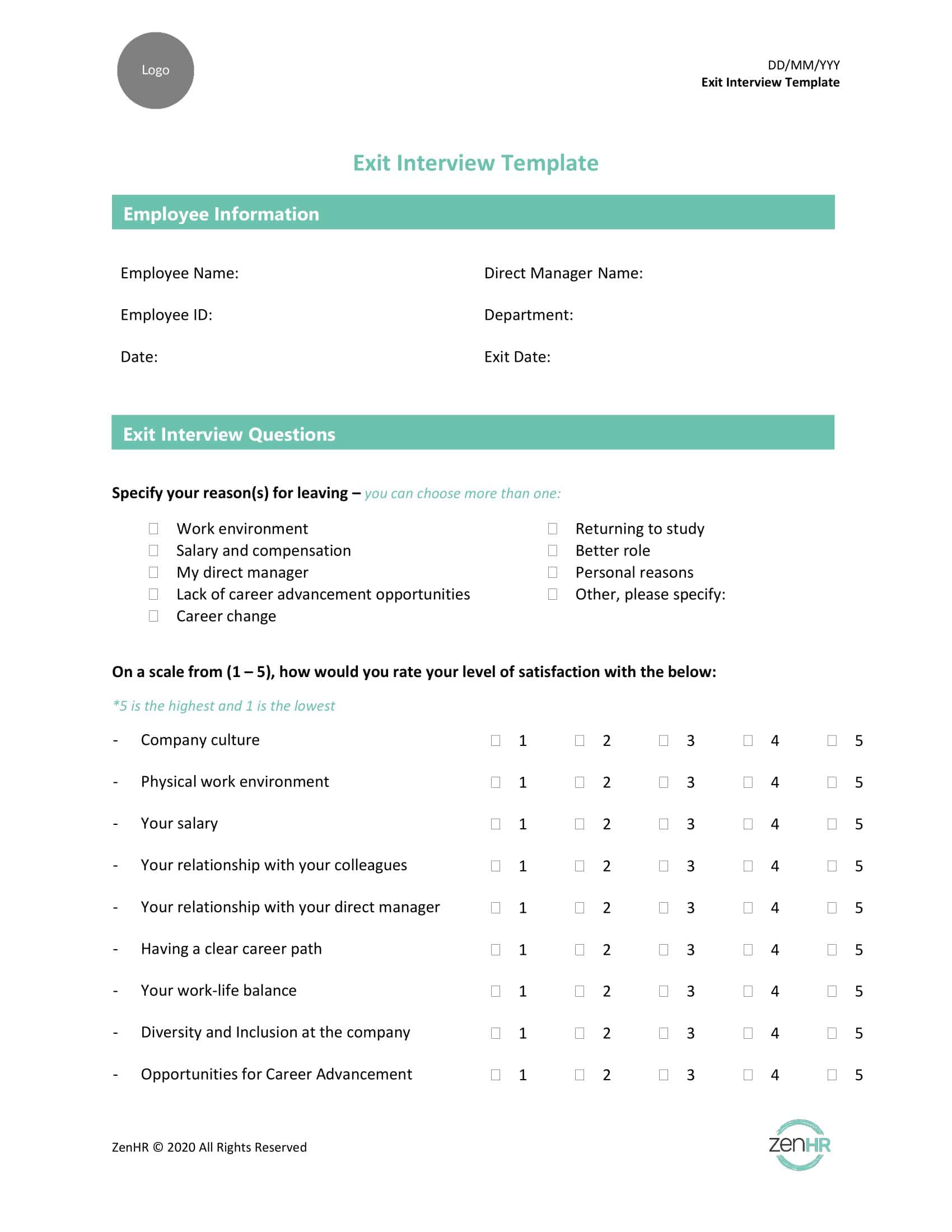

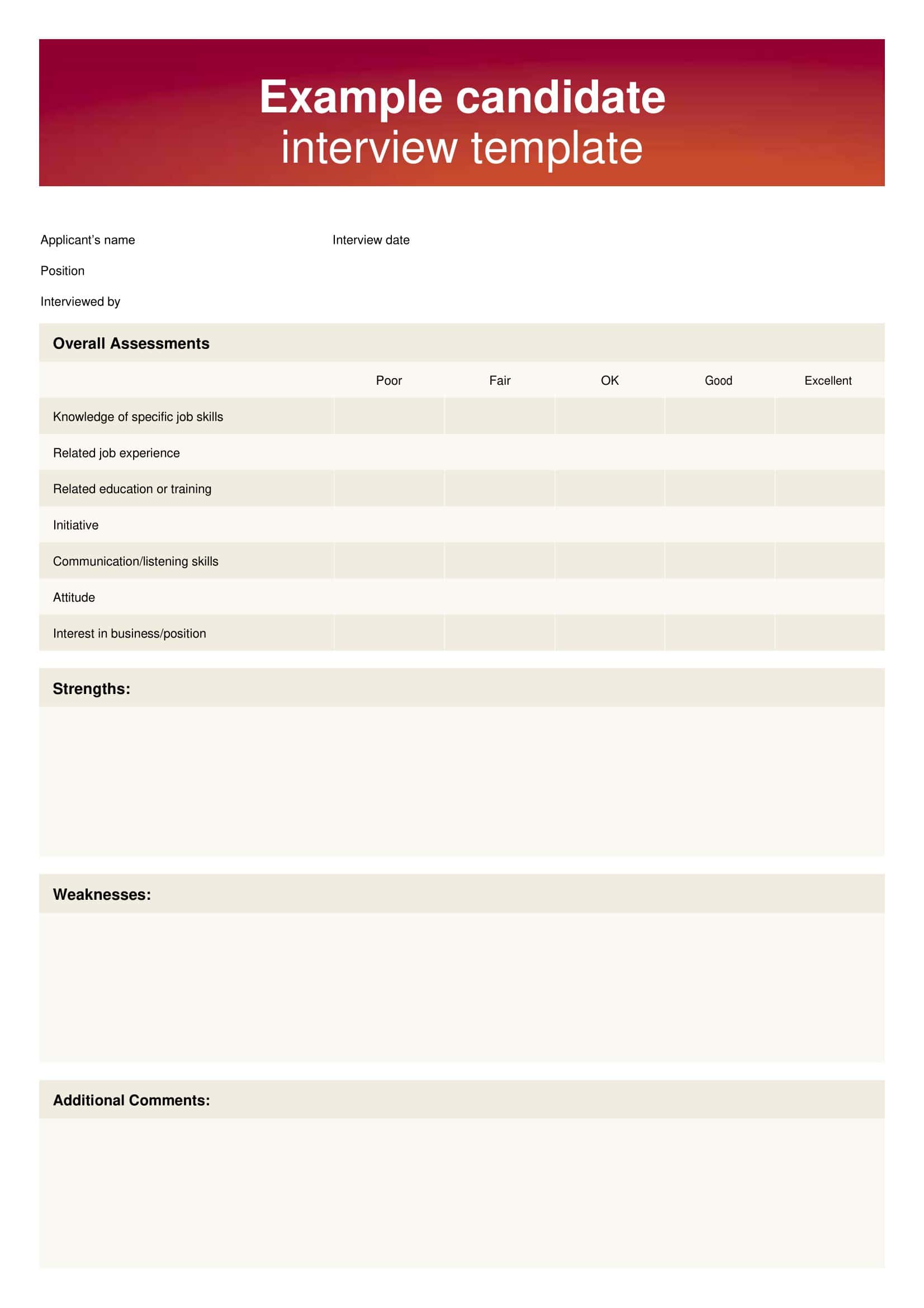



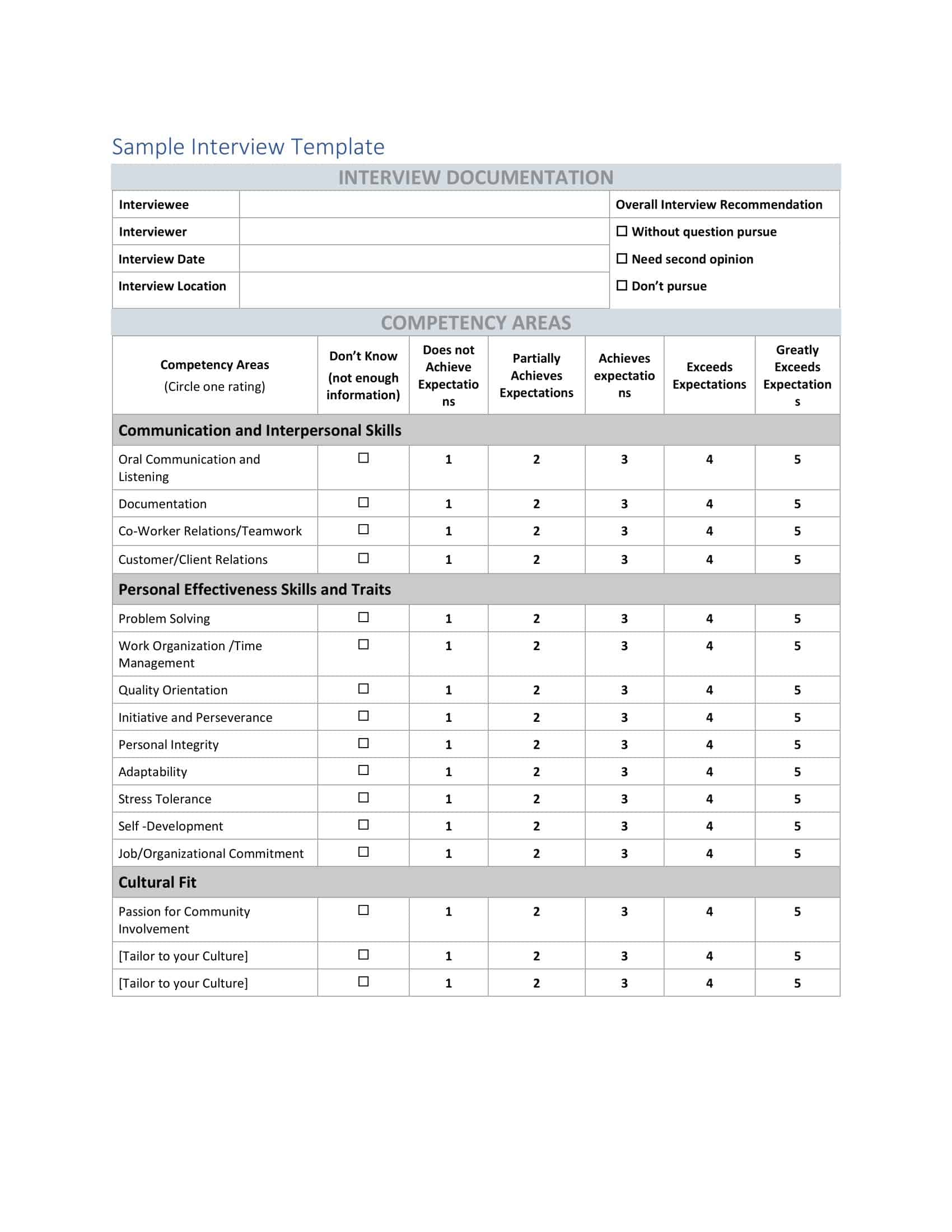
















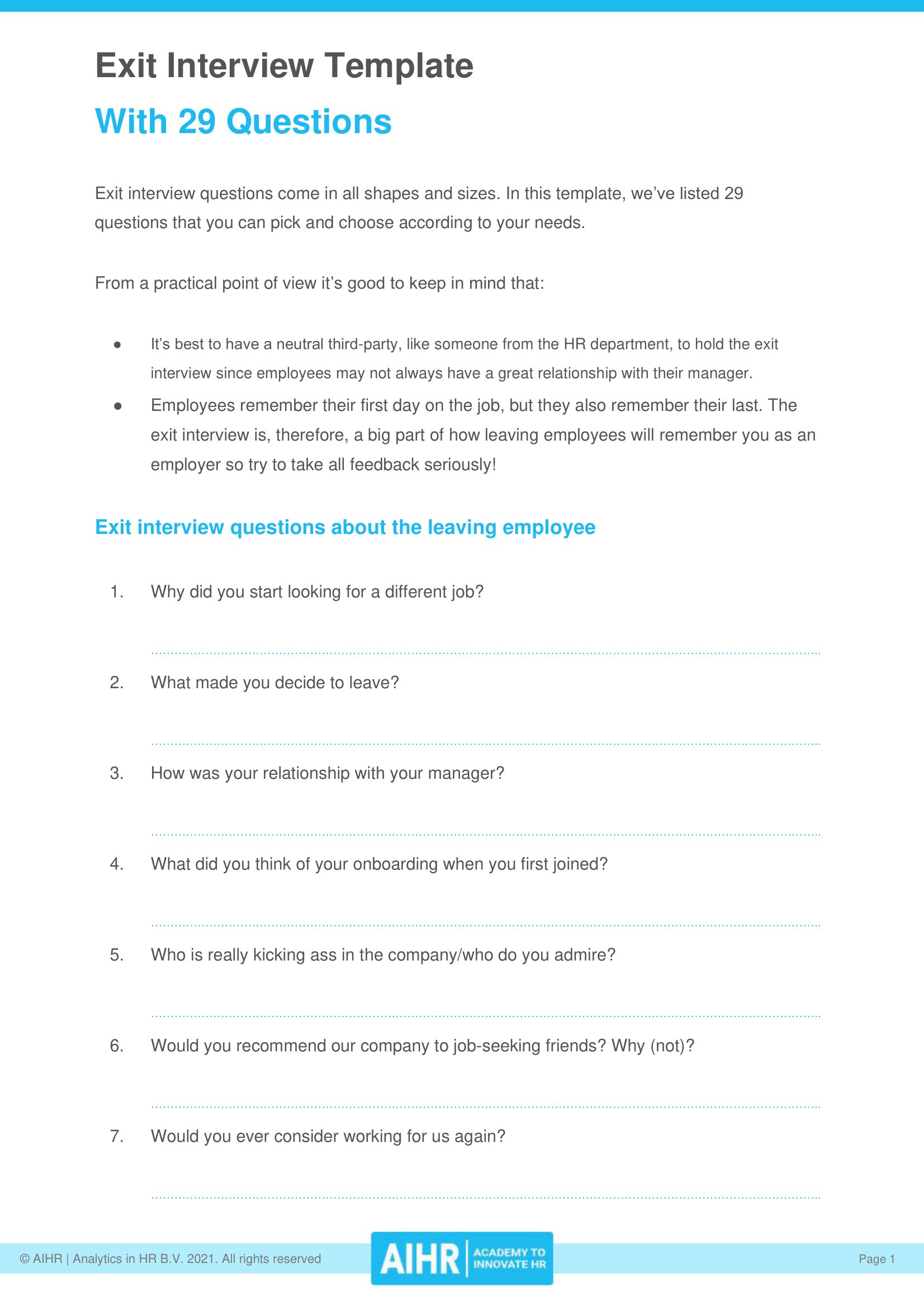











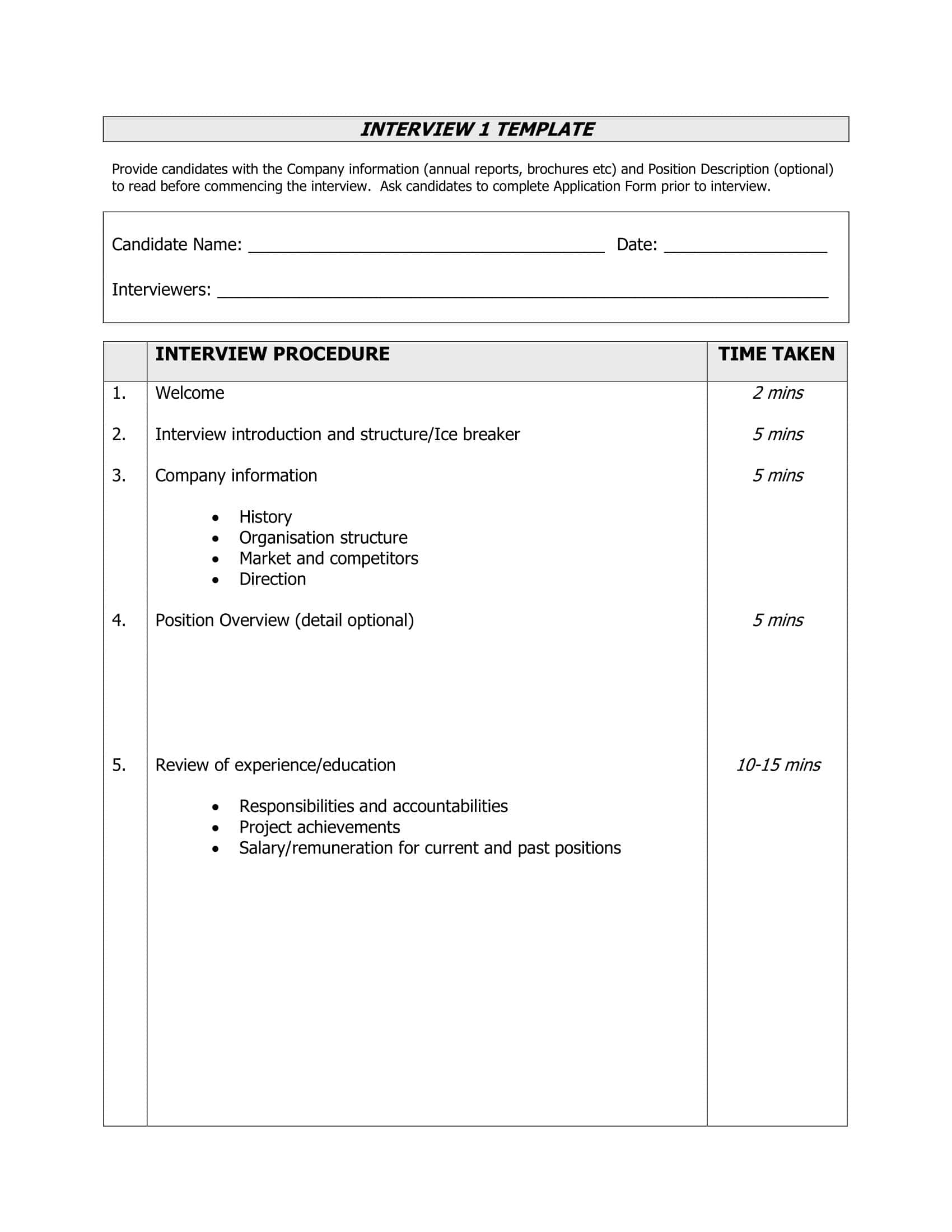
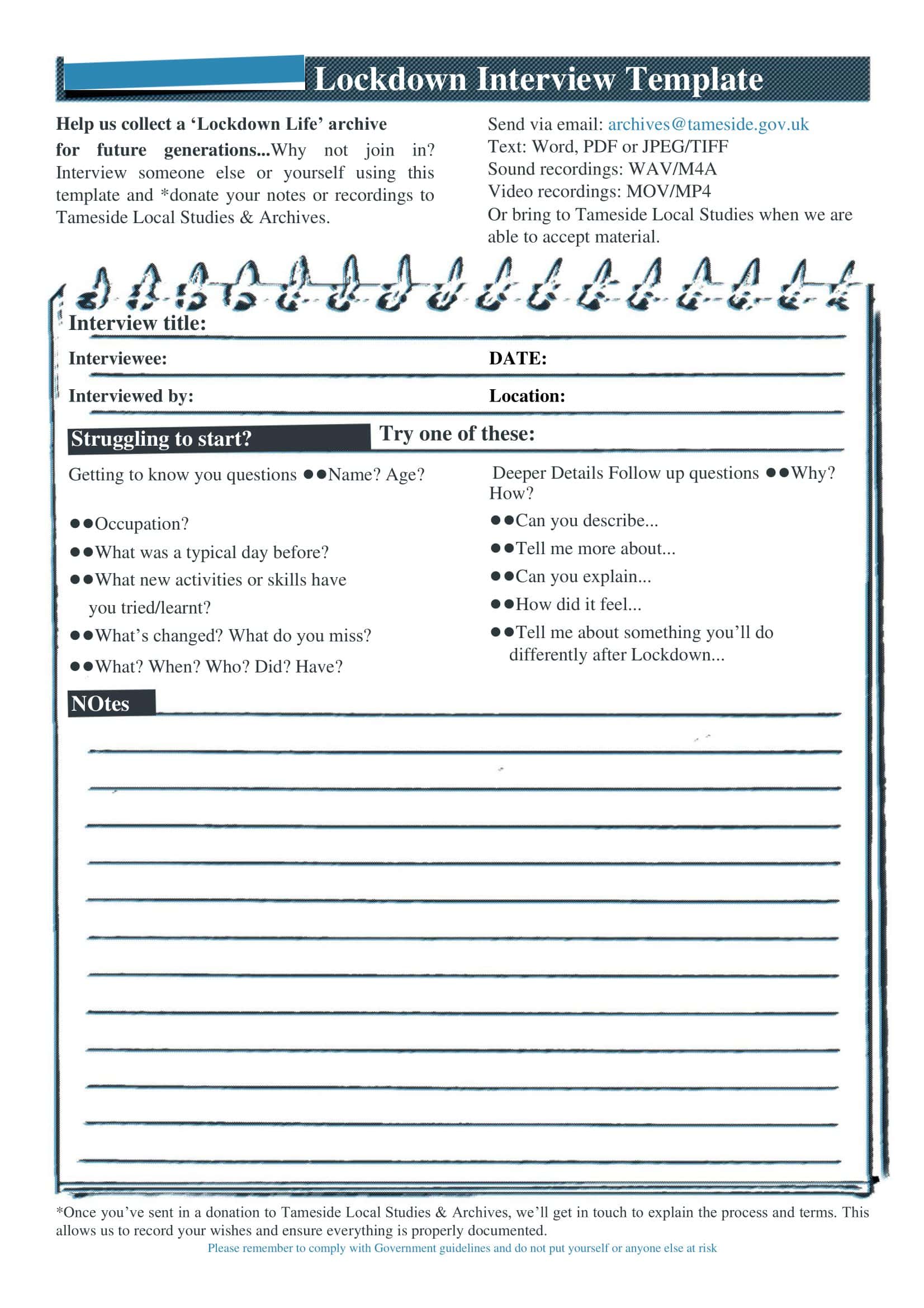
![%100 Free Hoodie Templates [Printable] +PDF 1 Hoodie Template](https://www.typecalendar.com/wp-content/uploads/2023/05/Hoodie-Template-1-150x150.jpg)
![Free Printable Food Diary Templates [Word, Excel, PDF] 2 Food Diary](https://www.typecalendar.com/wp-content/uploads/2023/05/Food-Diary-1-150x150.jpg 150w, https://www.typecalendar.com/wp-content/uploads/2023/05/Food-Diary-1-1200x1200.jpg 1200w)
![Free Printable Roommate Agreement Templates [Word, PDF] 3 Roommate Agreement](https://www.typecalendar.com/wp-content/uploads/2023/06/Roommate-Agreement-150x150.jpg)
